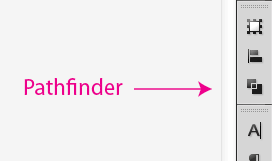With any marketing plan, being able to show ROI is incredibly important to prove your efforts are actually benefiting the company. According to HubSpot’s 2017 State of Inbound report, 46% of marketers believe that their Inbound campaigns resulted in higher ROI, while 41% couldn’t answer the question or didn’t know how to calculate ROI. So, what do you need to prioritize in order to maximize your company’s ROI?
Blogging and social media is a good place to start.
Top-of-the-funnel lead sources, like blogs and social media, are becoming increasingly more valued by both marketers and sales reps. This might be because people interested in your social media and blog content are more likely to become quality leads since they are already interested in what you have to say. According to the State of Inbound 2017 report, 59% of salespeople believe that inbound practices are the best way to generate high-quality leads.
Here are a couple tips on maximizing the effectiveness of your blog to help drive ROI:
CREATE NOTEWORTHY, SHAREABLE POSTS
A blog doesn’t have to be a two-page document that’s filled with text and statistics (like this one!) to prove to your readers that you know what you’re talking about. Take the time to research what your audience really likes and create just that. Maybe it’s wordy, informational content. Perhaps they might respond to more visually focused content instead. Whatever the format, make it so that it’s right for them. Videos have become easier to share on social media, and have been deemed by the 2017 State of Inbound report to be the “main disruptor” of the year, followed by AR and VR. If those formats appeal to your customers, then you should deliver content in that way.
If video production is out of your scope, focus on engaging content. When was the last time you were scrolling through your Facebook newsfeed, and you didn’t see an article from BuzzFeed? The majority of their content contains little text, and takes readers on a visual journey that holds their attention. And since their content is catchy and fun to read, it’s more likely to be shared on readers’ social media platforms.
BE CONSISTENT
If you’re posting once every day, and suddenly stop without warning, you start to lose credibility with your readers. Traffic is easier to lose than it is to gain. Implement a blogging schedule and stick to it. If you start to run out of ideas for content, don’t be afraid to ask your audience directly what kind of content they would like to continue to read.
Still need ideas? Look at your Google Analytics, or your analytics dashboard on your social media platforms, and take a look at what content has been performing the best. If a blog post is performing much better than the others, try to identify what readers were looking for when they found your content, and provide more of it.
UTILIZE KEYWORDS
SEO is a huge part of any inbound marketing content. Researching the keywords your audience is already using to find you and placing them naturally throughout your blog copy will make it more likely for people with similar interests to find you on a search engine results page. Along with new traffic coming into your site, your search engine ranking may also start to rise, making the possibility of someone stumbling on your blog greater.
OUTSOURCE SOME OF YOUR CONTENT
Since quantity is just as important as quality when it comes to inbound content, hiring writers outside of your own team simply increases the amount of content you’re publishing. And since your team will be less busy writing content, they will have more time to measure and optimize your inbound campaigns to make your content more effective.
DON’T BE AFRAID TO GIVE AWAY
You’re a smart cookie. You have great ideas, and you don’t want to just give them away for free. But your best content is the content that will get readers coming back for more. Until you have a consistent following, put the stuff that you would normally put behind a gated landing page on your blog. This will build trust with your readers, making you the go-to source for whatever topic you’re writing about.






